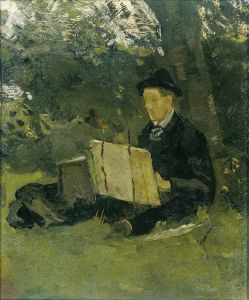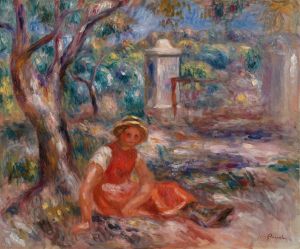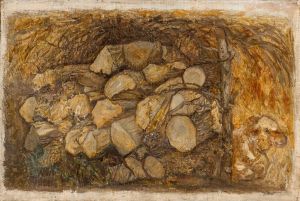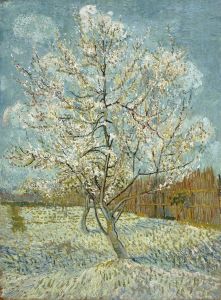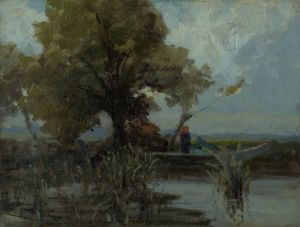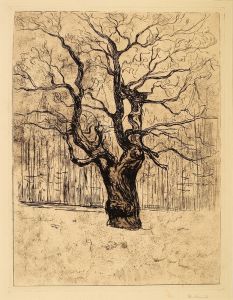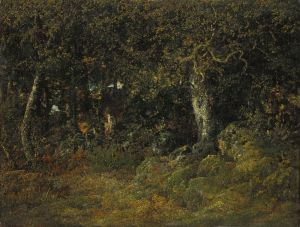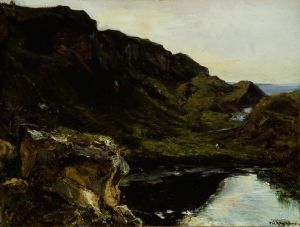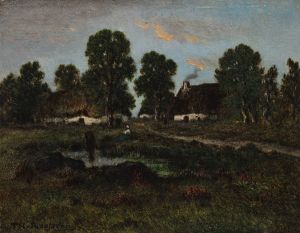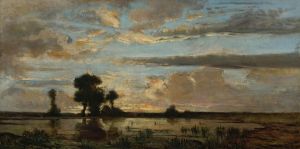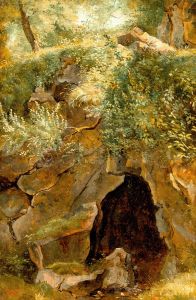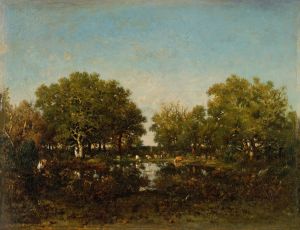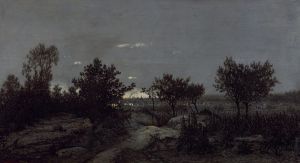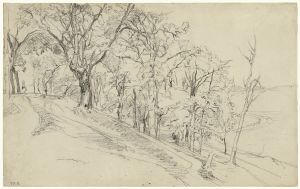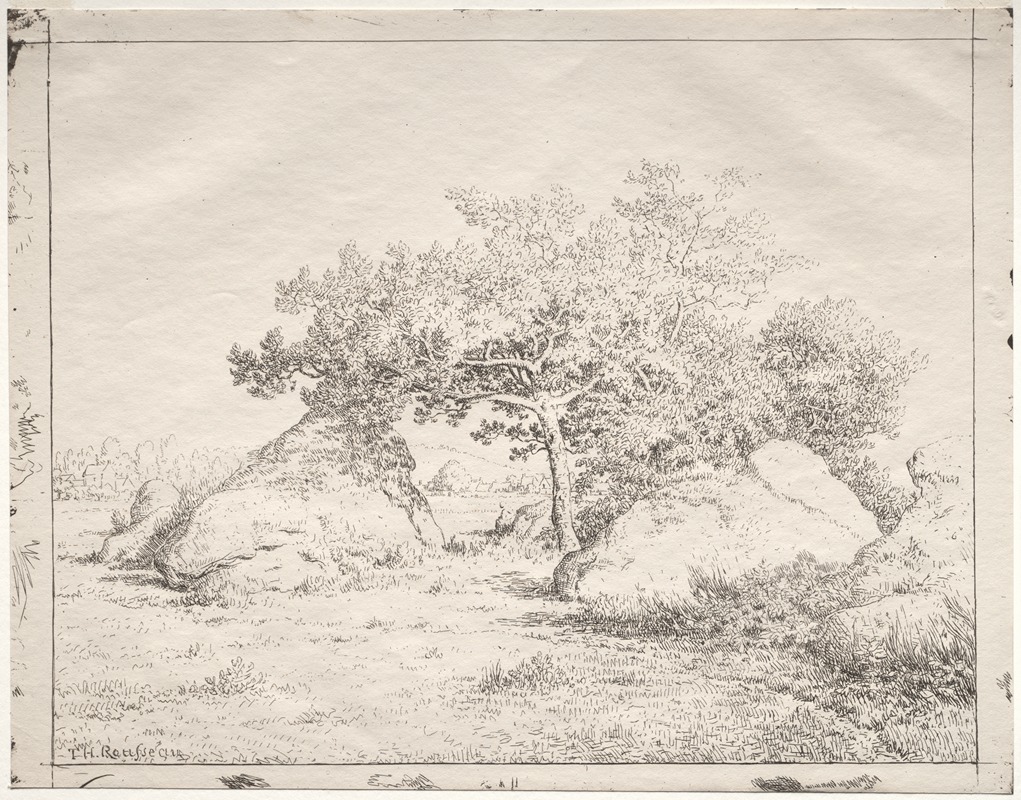
Cherry Tree at Blau
A hand-painted replica of Théodore Rousseau’s masterpiece Cherry Tree at Blau, meticulously crafted by professional artists to capture the true essence of the original. Each piece is created with museum-quality canvas and rare mineral pigments, carefully painted by experienced artists with delicate brushstrokes and rich, layered colors to perfectly recreate the texture of the original artwork. Unlike machine-printed reproductions, this hand-painted version brings the painting to life, infused with the artist’s emotions and skill in every stroke. Whether for personal collection or home decoration, it instantly elevates the artistic atmosphere of any space.
Théodore Rousseau, a prominent figure in the Barbizon School, is renowned for his landscape paintings that capture the serene beauty of nature. One of his notable works is "Cherry Tree at Blau," which exemplifies his dedication to portraying the natural world with authenticity and emotion. Although specific details about this particular painting are limited, Rousseau's broader body of work provides context for understanding his artistic approach and significance.
Born in Paris in 1812, Rousseau was a pivotal figure in the transition from traditional academic painting to a more naturalistic and expressive style. He was deeply influenced by the Romantic movement and sought to depict landscapes with a sense of realism and emotional depth. Rousseau's work often focused on the forests and rural areas of France, particularly the Fontainebleau Forest, which became a central motif in his paintings.
The Barbizon School, named after the village of Barbizon near the Fontainebleau Forest, was a group of artists who shared Rousseau's interest in painting nature directly from life. This approach was a departure from the idealized landscapes that were popular in academic art at the time. Instead, Rousseau and his contemporaries emphasized the changing effects of light and atmosphere, capturing the transient beauty of the natural world.
"Cherry Tree at Blau" likely reflects Rousseau's commitment to these principles. While specific information about the painting's composition and history is scarce, it can be inferred that the work embodies Rousseau's meticulous attention to detail and his ability to convey the mood of a landscape. His paintings often feature a harmonious balance between light and shadow, with a focus on the textures and forms found in nature.
Rousseau's technique involved painting en plein air, or outdoors, which allowed him to observe and render the subtleties of natural light and color with greater accuracy. This method was innovative at the time and laid the groundwork for later movements such as Impressionism. Rousseau's dedication to capturing the essence of the natural world earned him recognition and respect among his peers, although he faced challenges in gaining acceptance from the official art institutions of his day.
Throughout his career, Rousseau remained committed to his artistic vision, despite facing financial difficulties and health issues. His perseverance and passion for landscape painting left a lasting impact on the art world, influencing future generations of artists who sought to depict nature with authenticity and emotion.
In summary, while specific details about "Cherry Tree at Blau" are limited, Théodore Rousseau's legacy as a master of landscape painting is well-established. His work, characterized by a deep appreciation for nature and a commitment to realism, continues to be celebrated for its beauty and emotional resonance. Rousseau's contributions to the Barbizon School and his influence on subsequent art movements underscore his importance in the history of art.





